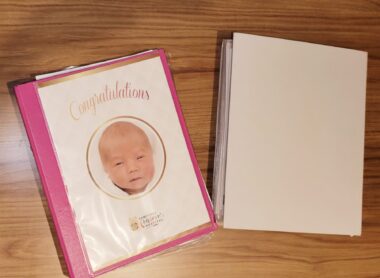How families can use AI to become effective caregivers
From organizing to planning, possibilities abound
Written by |

When our daughter, Rylae-Ann, was diagnosed with aromatic l-amino acid decarboxylase (AADC) deficiency, we quickly learned that caregiving required us to wear many hats. My wife, Judy, and I stepped into the role of nurse, teacher, therapist, advocate, and researcher. Like many caregiving parents, we often felt overwhelmed trying to organize information, plan therapies, and keep everything running smoothly.
In recent years, technology has made this journey easier. Now, artificial intelligence (AI) tools are revolutionizing our world, and as caregivers, we’re not exempt from this change. Many tools are available for free and are extremely helpful for parents like us. While nothing replaces human care, these tools can lighten the load, save time, and even make caregiving more creative and fun.
The practical implications of AI

Richard and Judy kept binders of medical reports that used to take hours to read. (Photo by Richard E. Poulin III)
Organize medical information: Caregivers often have to juggle piles of medical notes, therapy summaries, and hospital reports. Free tools like ChatGPT, Google Gemini, and Microsoft Copilot can help parents summarize and organize this information in an easy-to-understand way.
For example, you can copy a doctor’s summary or upload a research paper into an AI tool and ask to simplify it.
You can also use AI to create a daily schedule that includes therapy times, medication reminders, and rest periods. For us, this helped turn chaos into structure and gave us more time to focus on Rylae-Ann’s progress instead of paperwork.
Create educational and therapy materials: Every child with AADC deficiency learns differently. AI can help parents personalize learning and therapy at home.
Tools like Canva’s Magic Write and ChatGPT can generate lesson plans, simple worksheets, picture cards, and visual routines that match your child’s abilities. A prompt might be: “Create a colorful matching game that helps my child learn about body parts.”
You can also use text-to-speech tools like NaturalReader to turn lessons into audio. This is perfect for children who learn better through listening or need extra sensory support.
Communicate clearly with professionals: Whether you’re writing to a doctor, therapist, or school official, clear communication is key. AI writing assistants can help parents draft polite, organized messages.
You could say: “Help me write an email summarizing my child’s progress in therapy and ask for next steps.”
For families who struggle with English or medical language, AI can also help translate or simplify complex documents. This makes it easier to advocate for your child and ensure everyone stays on the same page.
Find emotional support: Caring for a child with complex medical needs is emotionally demanding. While AI can’t replace real human support, it can help caregivers process their thoughts.
I have only begun to explore this aspect of AI, as I found many students at my school are using chatbots as companions. However, parents can use AI as a journaling partner by asking it to help express feelings or highlight moments of gratitude.
You might type: “Help me write a short reflection about feeling proud of my child after therapy today.”
Small reflections like this remind us of how far our children have come and help us stay grounded through the tough days.
Stay connected to the global AADC community: Families affected by AADC deficiency are located around the world. Translation tools such as DeepL, Google Translate, and ChatGPT’s translate feature can help parents read updates, connect with other families, and understand international research.

Rylae-Ann prepares for bed with a teddy bear she wants featured in her bedtime story. (Photo by Richard E. Poulin III)
You can also ask AI to summarize long articles or webinars into key takeaways. This saves time and ensures you never miss important information about gene therapy, new treatments, or care strategies. Many research papers are written in English, so we have used these tools to make them available for parents in other languages.
Plan smarter and get creative: AI can make daily planning easier. You can ask it to create a meal plan for children with swallowing difficulties. You could suggest calming bedtime stories that include your child’s name, or even make a schedule that balances therapy and playtime.
We’ve used AI to write fun, personalized bedtime stories for Rylae-Ann that include her friends, her favorite teddy bear, and therapy themes. It’s a small way to make therapy part of everyday life in a joyful way. She looks forward to reading along and giggles as she hears familiar names.
A helpful partner, not a replacement: AI tools can never replace doctors, therapists, or the love of a parent. But they can make caregiving more manageable. These tools can help parents feel more organized, creative, and empowered. They can provide us with more time to focus on what truly matters: our children’s progress and happiness.
Being a caregiver for a child with AADC deficiency will always be challenging, but with the right tools and community support, it becomes a journey filled with purpose and hope.
Note: AADC News is strictly a news and information website about the disease. It does not provide medical advice, diagnosis, or treatment. This content is not intended to be a substitute for professional medical advice, diagnosis, or treatment. Always seek the advice of your physician or other qualified health provider with any questions you may have regarding a medical condition. Never disregard professional medical advice or delay in seeking it because of something you have read on this website. The opinions expressed in this column are not those of AADC News or its parent company, Bionews, and are intended to spark discussion about issues pertaining to aromatic l-amino acid decarboxylase deficiency.







Leave a comment
Fill in the required fields to post. Your email address will not be published.